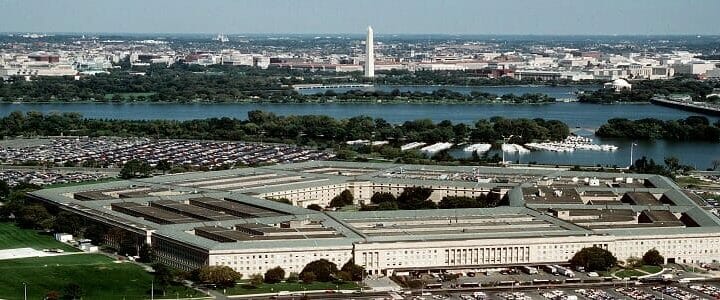There is no denying that 2020 was a rough year for the global aerospace and defense (A&D) industry due to the novel coronavirus pandemic. In November, Boeing announced that it would lay off thousands of workers, while Raytheon also disclosed that more than 4,000 employees or contractors would also face layoffs due to the aviation downturn.
Few could have seen this coming, as it was in December 2019 that ClearanceJobs reported A&D was an industry built for the future – driven by product demand. While it is true that militaries around the world will need aircraft regardless of the pandemic, the reductions brought about in civilian air travel have been devastating for the industry.
Yet, recovery is likely around the corner. As Covid-19 vaccines roll out, commercial air travel is likely to pick up while according to a December 2020 study from Deloitte, global spending on defense programs will likely grow by about 2.8% in 2021, driven by increased global tensions. As a result, the A&D recovery will likely remain uneven across the two key sectors of commercial aerospace and defense.
Deloitte’s “2021 Aerospace and Defense Industry Outlook” report found, “The commercial aerospace industry has been significantly affected by the COVID-19 pandemic, which has led to a dramatic reduction in passenger traffic and, in turn, affected aircraft demand. As a result, the commercial aerospace sector is expected to recover slowly, as travel demand is not expected to return to pre–COVID-19 levels before 2024. The defense sector, on the other hand, is expected to remain stable in 2021, as most countries have not significantly reduced defense budgets and remain committed to sustaining their military capabilities. However, given the disruption in the complex global supply chain, some defense programs could face minor cost increases and schedule delays in 2021.”
Industry Trends To Watch
According to the report, there were six key aerospace and defense industry trends that will continue this year. The first trend was a slow recovery in passenger travel, which could impact aircraft deliveries and in turn industry revenue. While pent up demand may result in short-term growth in passenger travel, the damage to lucrative business travel could take two to three years to recover.
By contrast, defense should be among the bright spots for the A&D industry, as defense budgets, and with it revenues, are expect remain largely stable for defense contractors. Military programs will continue to be critical to national defense, Deloitte noted, especially when geopolitical tensions are considered. As a result, the industry is expected to see that 2.8% increase, crossing the $2 trillion mark.
“The defense will continue to be strong in 2021 because the defense budget for Fiscal year 2021(FY21) is in place and the incoming administration has commented that it does not see a material change in their intended budget for 2022,” explained Robin S. Lineberger, principal for global & U.S. Aerospace and defense leader at Deloitte LLP.
“Further, the government can utilize defense spending as one of the tools to sustain and stimulate the core manufacturing base in the US. This means good jobs for the country,” Lineberger told ClearanceJobs. “The defense budget is strong because of the renewed big power competition between the United States, China, and Russia as well as the continued challenges in the Middle East.”
Funding for space will continue to increase, driven in part by satellite broadband Internet access demand, but space exploration and the militarization of space will also continue to travel growth in 2021, while launch services are expected to see strong growth driven by technological advances and reduction in launch costs.
Supply Chain, M&A and R&D
The other notable trends for 2021 could include the industry’s emphasis to focus on transforming the supply chains into more resilient and dynamic networks. A lesson learned during the pandemic was how the supply chain could be impacted, and the industry has taken note. The industry will have to determine how to adjust, especially those smaller suppliers that were heavy affected by Covid-19 shutdowns.
As the industry recovers, mergers and acquisitions (M&A) could make big news in 2021, as well-capitalized suppliers are likely to pursue opportunities for consolidation, Deloitte predicted. Weaker players may be forced to see and/or restructure assets, while companies in specific A&D segments may be likely to pursue M&A to build scale.
Technological developments and innovation will also transform the A&D industry, and potentially drive long-term growth. Some technologies to watch include advanced air mobility, hypersonics, electric propulsion, and hydrogen-powered aircraft Deloitte, noted.
Despite the setbacks caused by the pandemic, 2021 could see a return to normality, with the defense sector expected to remain stable and weather Covid-19’s disruption. Long-term growth prospects for the A&D industry remain strong, Deloitte noted.
“With respect to the challenges on the commercial aircraft side, Covid-19 has caused passenger travel (business and pleasure) to fall significantly and is not expected to return to pre-pandemic levels until well into 2023,” Lineberger told ClearanceJobs.
“As a result, aircraft orders have been canceled or delayed and the commercial aircraft manufactures have had to slow production levels to align with the reduced demand,” Lineberger added. “It is difficult to predict which of these will return first and at what pace. It will come down to two key drivers, do passengers feel safe when the travel and what business trips will companies feel they have to make going forward. Said another way, businesses have adapted to virtual work and it is unclear how much will revert to a pre-pandemic approach.”




